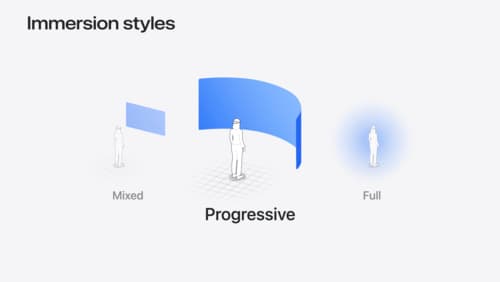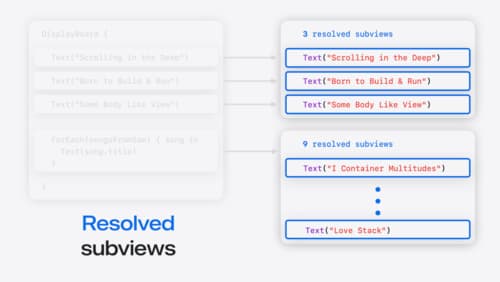what can I use to display a tree data structrue
Asked on 2024-08-07
1 search
To display a tree data structure in SwiftUI, you can use the ForEach view to iterate over your data and create a hierarchical view. The session "Demystify SwiftUI containers" from WWDC 2024 provides insights into using ForEach and other SwiftUI containers to create flexible and composable views.
Here are some key points from the session:
-
Using
ForEachfor Iteration:- You can use
ForEachto iterate over a collection of data and generate views for each item. This is useful for creating hierarchical structures like trees. - Example:
ForEachcan be nested within aViewBuilderto create complex compositions (Demystify SwiftUI containers).
- You can use
-
Sections and Grouping:
- SwiftUI's
Sectionview can be used to group items, which is useful for creating sections within your tree structure. - Custom containers can be made to support sections by using the
ForEachview to iterate over section data (Demystify SwiftUI containers).
- SwiftUI's
-
Custom Containers:
- You can create custom containers that support flexible composition by using
ViewBuilderand other SwiftUI APIs. - Example: Refactoring a container to be initialized using a
ViewBuilderallows for more flexible content composition (Demystify SwiftUI containers).
- You can create custom containers that support flexible composition by using
For a detailed walkthrough on how to implement these concepts, you can refer to the session "Demystify SwiftUI containers" from WWDC 2024, particularly the chapters on Composition and Sections.
Relevant Sessions
- Demystify SwiftUI containers
- Composition
- Sections
By leveraging these techniques, you can effectively display a tree data structure in SwiftUI.

Dive deep into volumes and immersive spaces
Discover powerful new ways to customize volumes and immersive spaces in visionOS. Learn to fine-tune how volumes resize and respond to people moving around them. Make volumes and immersive spaces interact through the power of coordinate conversions. Find out how to make your app react when people adjust immersion with the Digital Crown, and use a surrounding effect to dynamically customize the passthrough tint in your immersive space experience.

Unlock the power of places with MapKit
Discover powerful new ways to integrate maps into your apps and websites with MapKit and MapKit JS. Learn how to save and reference unique places using Place ID. Check out improvements to search that make it more efficient to find relevant places. Get introduced to the new Place Card API that lets you display rich information about places so customers can explore destinations right in your app. And, we’ll show you quick ways to embed maps in your website with our simplified token provisioning and Web Embed API.

Demystify SwiftUI containers
Learn about the capabilities of SwiftUI container views and build a mental model for how subviews are managed by their containers. Leverage new APIs to build your own custom containers, create modifiers to customize container content, and give your containers that extra polish that helps your apps stand out.
